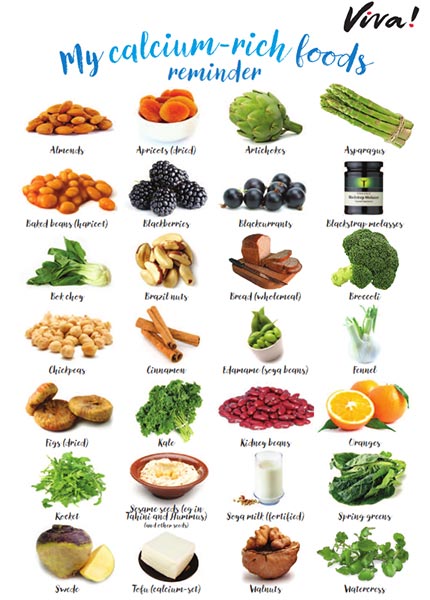
This was the first time salt was created using this method by the ancient Chinese and Romans. In the early fifth century BC, the Buddha taught the world to collect and store salt. To collect the brine, the Romans used ceramic containers known as briquetage. Workers sifted the concentrated salt out of the water and washed it away. They then poured the brine into shallow pans and set them on clay pillars set over a fire of peat. The workers sold the powdered, dried sea salt to colonial New World residents. In the New World, slaves were brought from Africa to rake salt on various islands in the West Indies, such as the Bahamas and Turks and Caicos Islands.
While most people are familiar with table salt, not everyone knows exactly how sea salt is made. Table salt's main ingredient is sodium chloride. However, sea salt contains other minerals like magnesium, iron and calcium. These minerals are present in trace amounts in sea sal, and they are also included in salt crystals. Although it is best not to consume this mineral in excess, adding a small amount to your dishes will provide additional nutrients and nutrition.

Sea salt is the most common type of salt. It comes from warm climates. Sea salt is extracted by filling manmade swimming pools with salt water. The water then evaporates. The crystals will form when the water evaporates out of the man-made pool. These man-made pools are referred to as "salt works". The process for harvesting salt requires several billions years. There are many ways to harvest salt.
Sea salt production is a complex process. The first step in sea salt production is extraction of seawater. The first step is to evaporate the water from the ocean. The water is allowed in the water to dry, and then concentrated. After that, the sea sal is ready to sell. The product can then be labeled as either unrefined, or refined. The unrefined ocean salt may contain marine bacteria or trace mineral that contributes to its complex taste.
The process of harvesting salt is simple. Salt crystals are formed at the bottom of water and are almost dry. By pouring water on the salt and then scraping it off, the impurities can be removed. This is a great way to get sea salt. It is extremely affordable and widely distributed. It is widely available in many nations. Once harvested, the salt can be used for human consumption. It can be used in endless ways.

Extracting salt from seawater is similar to extracting salt water. Each salt extraction process is different. Some sea salts may be extracted from the Earth, while others can only be harvested from the sea. The salt is extracted using chemicals in the second case. To extract the iodine the minerals from the sea are removed. In order to extract the iodine from salt, other minerals are also removed.
FAQ
How can I learn how to cook like a professional chef?
Cooking can be a great way for you to grow as a person. Cooking healthy meals for your family and friends is a great way of increasing self-confidence and learning new skills. If you want to be able to cook well, then start cooking at home. Find out what recipes you love first. You can then read books about other cuisines like Mexican, Chinese and Italian. Finally, learn how to make different dishes until you are comfortable with them.
Do I need any special equipment to cook?
It doesn't take any special equipment or tools to learn to cook. The right tools can make cooking much easier. For example, you could use a knife instead of a fork to eat pasta or a whisk instead of a hand mixer to whip egg whites into stiff peaks. Having the right tools makes cooking less intimidating and allows you to start faster.
How long does learning to cook take? What time do you need to learn how to cook?
It depends on your level of skill. Some people can pick up basic cooking techniques within a day or two. Others may take several months or longer to feel competent enough to teach themselves how they cook.
There are many factors that affect the time required to learn how cook. Someone who has never been to the kitchen before might need more time than someone who does it regularly. Different types of cooking require different amounts of experience. For instance, baking requires more knowledge than frying.
You should learn a particular technique to improve your cooking speed. You can then move on to the next technique once you have mastered it. You shouldn't stress about how long it takes to learn how cook. Keep practicing and enjoying the process.
What skills is required to attend culinary school
You must have the ability to cook well and work under pressure. To learn how to cook, you should take cooking classes at your local high school or community college. Once you've learned basic techniques, you'll need to find a job working for a restaurant or catering company.
How can I get hired to be a chef?
The first step toward getting a job as a chef is to complete a culinary arts degree. You should next join a professional organization such as the American Culinary Federation. This organization provides certification exams and offers networking opportunities.
What are the basic skills of cooking?
Basic cooking skills include being able to read and measure ingredients, prepare food safely, clean up after yourself, and cook. You need to master these skills if you want to cook for your own meals. You can also save money by cooking at home.
Where can I get free online cooking lessons
Many websites offer cooking lessons for free. You can search YouTube for videos that teach you how to prepare different meals. You may have access to thousands upon thousands of recipes on some websites. You will need to pay a monthly subscription, but you can still try the site for free for 30 day.
Statistics
- On average, chefs earn $58,740 a year, according to the BLS. - learnhowtobecome.org
- In the United States, the category is estimated at $23.2 billion annually and is growing faster than the market. (washingtonpost.com)
- under 10 Kids have been taught that there is special food just for them, and Fiese says that 10 percent of kids will throw a tantrum if they don't get the food they want. (washingtonpost.com)
External Links
How To
How to make a perfect eggroll
Omelets are one of my favorite foods to eat at breakfast. But how do they turn out so perfectly? I've tried many recipes and different methods but none have worked. Today, I'd like to share some tips with you in order to make delicious and fluffy omelets every day.
When making omelets, it is important to be aware that eggs can be temperamental. The eggs must be fresh from an organic source and kept at room temperature until they are ready to be cooked. You must keep them cool enough to allow the whites to form properly and the yolks to become too runny if they're not kept at the right temperature. This will make your omelets appear strangely colored. It is best to use room-temperature eggs if you are going to cook them right away.
You can also separate the egg before you add it to the pan. You don't want the white to get mixed with the yolk, as this could cause the egg to curdle.
The egg can burn if it is placed directly on the stovetop. Instead, heat the egg for 10 seconds in the microwave before placing it in the pan. The microwave heat cooks the eggs just right without overcooking them.
Next, let’s talk about mixing the egg. When you mix eggs together, you want to beat them well. Turn the bowl upside down and grab the whisk to do this. Next, shake the bowl vigorously. This way, the air inside the bowl gets whipped around and mixes the egg thoroughly.
The fun part begins - you need to pour the milk into your mixture. Fold the eggs in the milk mixture by first pouring half of it into the egg whites. If you still see streaks of eggs, don't worry. These streaks will disappear once the omelet has been turned over.
After folding the eggs fold the pan onto medium heat. When the oil starts to hot, wait for the pan to cook. Once the oil has gotten hot, add 1/4 cup of butter and swirl it around so that the entire pan is coated. Carefully open the pan's lid and add salt to the pan. The salt will help to prevent the omelet's sticking to the pan.
Once the omelet has formed completely, cover the pan and let it set for a few minutes. Flip the omelet upside down or with a spatula. Cook the other side for another minute or two. Serve immediately after removing the omelet from its pan.
This recipe works best when you use whole milk.